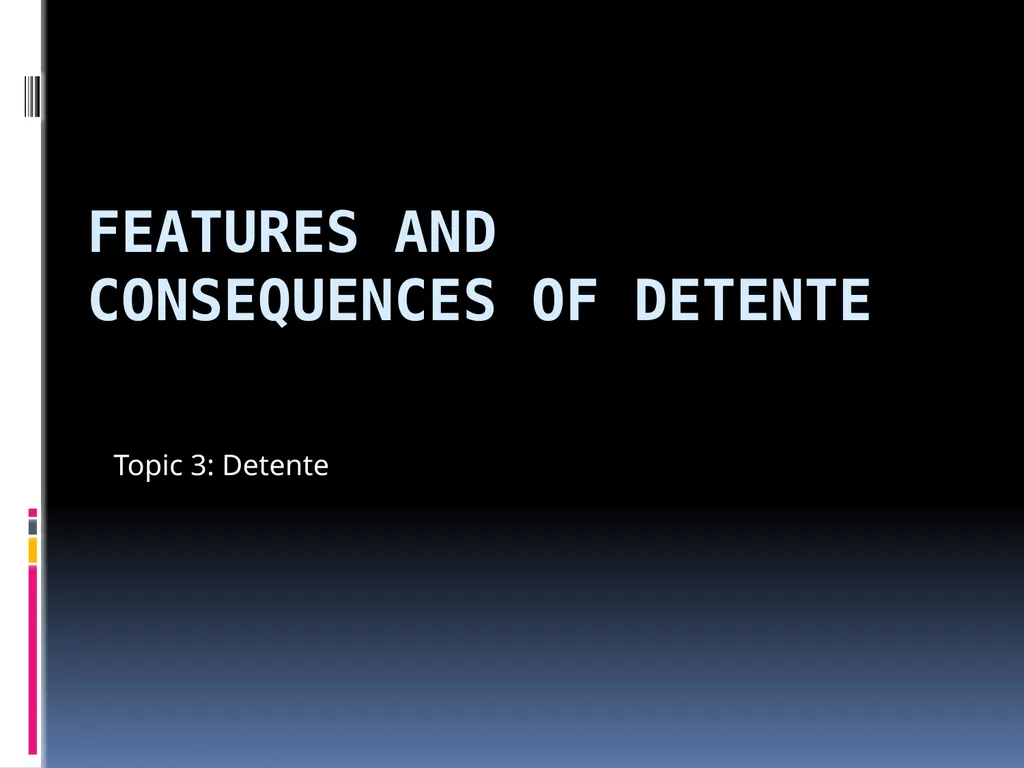
Author : alexa-scheidler | Published Date : 2025-08-16
Description: Features and Consequences of Detente Topic 3: Detente Arms Limitations Nuclear Test Ban 1963 Non Proliferation 1968 SALT (Strategic Arms Limitation Treaty) 1969-1972 The Anti Ballistic Missile Treaty The Interim Treaty (expired in 1977) TheDownload Presentation The PPT/PDF document "" is the property of its rightful owner. Permission is granted to download and print the materials on this website for personal, non-commercial use only, and to display it on your personal computer provided you do not modify the materials and that you retain all copyright notices contained in the materials. By downloading content from our website, you accept the terms of this agreement.
Here is the link to download the presentation.
"Features and Consequences of Detente Topic 3:"The content belongs to its owner. You may download and print it for personal use, without modification, and keep all copyright notices. By downloading, you agree to these terms.













